Explore Japan in depth: Coral Expeditions’ 14-night cultural voyage
There’s a multitude of memories to absorb after cruising from Tokyo to Fukuoka over 15 culture-packed days on an expedition ship.
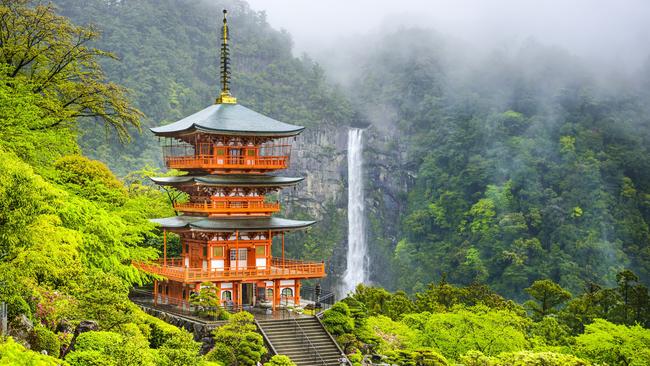
It’s a normal weeknight at home, a few days after we have returned from an eye-opening cruise in Japan.
Chef Geoff, otherwise known as my husband, pours us glasses of cool sake from Tokushima’s oldest brewery, opens the last of the artistically packaged crackers we bought at a salt workshop on Nakadori Island, and announces that the soy sauce from Shodoshima’s Yamaroku distillery is so superior to anything he usually uses that he intends to import it.
We’re still absorbing a multitude of memories after cruising from Tokyo to Fukuoka over 15 culture-packed days, an intensive introduction to the island nation on board Coral Expeditions’ boutique, 120-guest expedition ship Coral Geographer.
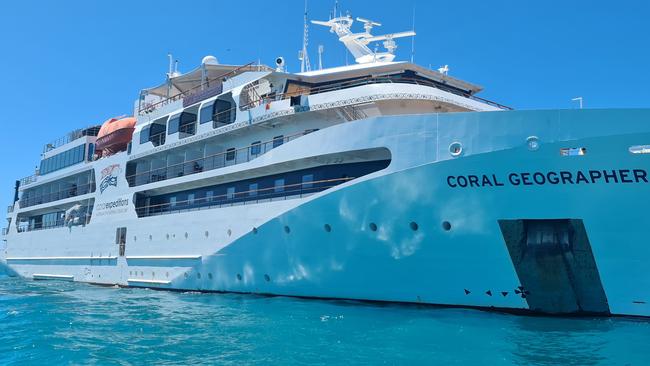
Seeing Mount Fuji in real life is the perfect start to our personal voyage of discovery – we are among the few passengers who haven’t visited Japan before – but it takes a couple of goes. Obuchi Sasaba’s manicured green tea plantation in the mountains of Shizuoka is a favourite viewing spot, but when we arrive tropical rainclouds obscure the sacred mountain.
Onwards, then, to Mount Fuji World Heritage Centre, a striking contemporary museum in Fujinomiya that features an observation hall designed for optimum photo opportunities.
Slowly but surely, the clouds clear and Fuji-san is crowned by a rainbow. It is like receiving a blessing. Its distinctive form remains in sight for several more hours, wreathed in ethereal clouds and backlit by a luminous rose-gold sunset as we sail out of Shimizu harbour.
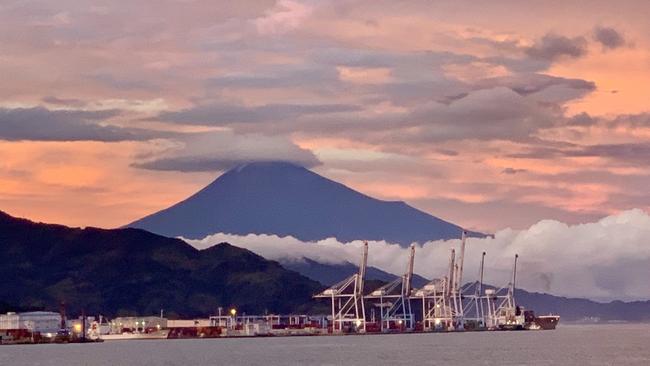
Over many bus trips from ports to temples, shrines, castles, national parks, villages and cities, Coral Geographer’s three resident Japanese guides Hide, Tomi and Yuki, teach us basic Japanese phrases and share their knowledge about everything from temple and torii gate etiquette to modern and historic farming practices, what the different degrees of bowing signify, onsen do’s and don’ts, and the delights of matcha and soy ice cream.
And throughout the voyage, brilliant guest speakers Reed Knappe and John McBride present impressive lectures on Japanese history, philosophy, arts and religions that add invaluable layers of understanding to the sites we explore.
At the serenely beautiful Nachi Taisha compound, which we visit from Shingu on the Kii Peninsula, we see how long-held Shinto beliefs have existed harmoniously alongside Buddhism since the latter arrived in Japan in the sixth century.
The Buddhist Seiganto-ji temple and Shinto Kumano Nachi Taisha Grand Shrine share the same exalted position on Mount Tachi and, along with the spectacular Nachi Falls, are among the most significant sites along the Kumano Kodo pilgrimage route.
At the start of the steep, winding walk to the compound through a forest of cedar and cypress, I am amazed to see a vending machine seemingly plonked at random in the middle of the countryside. But as we learn from our academic lecturers, the interplay of history and ultra-modernity is evident at many levels in Japan.
Take Kobe, one of the country’s five biggest, busiest ports. Bristling with cranes and surrounded by high-rises, it is hard to imagine what it looked like in 1868 when it opened as an international trading hub – a turning point in Japan’s modern history – let alone when it was founded in the 7th century.
While in Kobe we have the choice of exploring Japan’s second-biggest city, Osaka, renowned for its mix of traditional and futuristic architecture, or Kyoto, celebrated as the cultural capital.
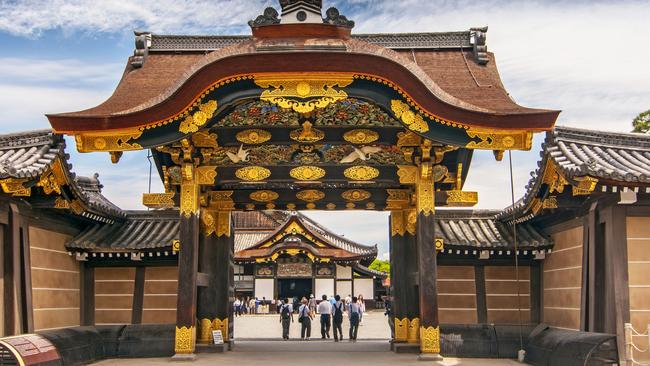
Despite knowing that millions of tourists flood into Kyoto every year, we choose it. The highlight for me is not the illustrious Golden Pavilion, stunning though it is, nor the meticulously preserved old shopping streets in the Ninenzaka district. It is treading the nightingale floors of Kyoto’s imposing, blissfully uncrowded Nijo Castle.
While there are more than 100 castles in Japan, most have been reconstructed over the centuries – some several times – after being damaged or destroyed by earthquakes, fire and wars. Nijo Castle was built in the 1600s for Tokugawa Ieyasu, whose shogunate governed Japan for 260 years; the latest restoration of the UNESCO World Heritage-listed castle’s ornate gates, inner palace buildings and outer moat walls started in 2011 and will no doubt be an endless project.
The diversity of destinations we explore over two weeks is astounding. Because we are sailing mostly into densely populated, urbanised ports it is more of an excursion cruise rather than Coral Expedition’s regular voyages. There are no wet landings on remote shores, and the line’s trademark Xplorer tenders are deployed only once.
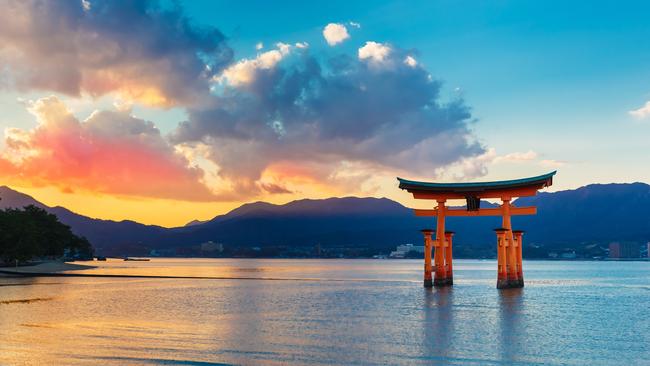
That is the day we go to Miyajima, an island recognised the world over for the distinctive red “floating” torii gate that guards Itsukushima Shrine.
An early morning start means we have the streets and sacred shrine almost to ourselves, along with a few resident sika deer. I could happily book into a little ryokan and spend a few days walking the forest trails, discovering the island’s Buddhist temples and looking for monkeys on Mount Misen. I could find the perfect wooden rice paddles (reportedly invented in Miyajima by a Buddhist priest in the 1800s) to take home as a reminder to return another time.
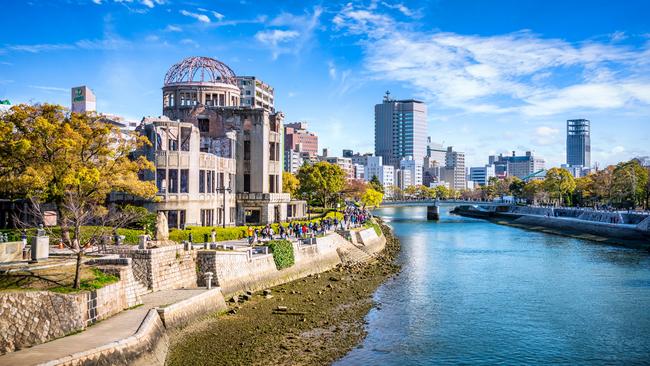
Our brief sojourn at Miyajima is followed by a sobering afternoon in Hiroshima.
August 6, 2025 will mark 80 years since the city and thousands of lives were destroyed by the US atomic bomb. Some two million people visited the Peace Memorial Park and Peace Memorial Museum last year, including an increasing number of foreigners.
I’m so glad to have been one of them. It is a profoundly moving experience but also a powerful expression of human resilience and the futility of war.
It is slightly disconcerting to be driven around the port of Sasebo a few days later and see that the substantial US naval base established at the end of World War II is still in operation. However, we are on a mission to discover more about the porcelain that has been produced in and around Arita since the 17th century.
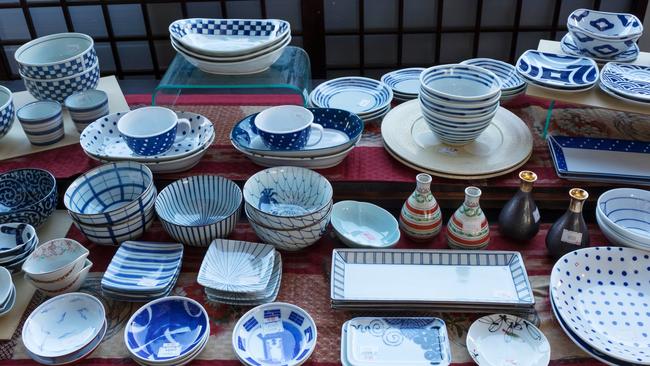
There are pottery shops aplenty in the pretty town and Arita’s Tozan Shrine features two enormous porcelain komainu guardian dogs, among other symbolic pieces that elsewhere would be made of stone.
We delve into another facet of Japan’s complex religious past in the Goto Islands, home to the “hidden Christians” for nearly 300 years during the Tokugawa shogunate. They had to conceal their faith or face persecution and death; Martin Scorsese’s confronting movie Silence is based on Shusaku Endo’s novel about this period. For budgetary reasons, it was filmed in Taiwan rather than the islands.
In many of the smaller ports, traditional culture comes to us.
Coral Geographer is greeted and farewelled as a first-time foreign-flagged maritime visitor by spectacular displays on the docks. There are taiko drummers in Shingu, a performance by the Awa Odori Dance group in Tokushima, fireworks and festival music as we sail out of Karatsu and, as we depart our penultimate port of Fukue, a children’s drum ensemble amazes everyone on the ship with their skill and enthusiasm. They are only about six years old.
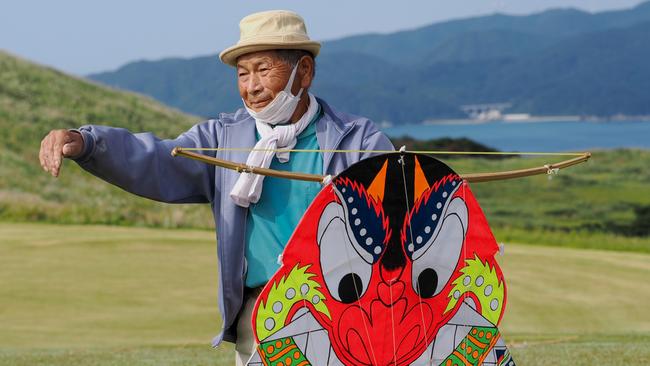
Captain Mark Neill, who helmed sister ship Coral Adventurer on a similar journey in 2023, has the ceremonies down pat. He, his wife and two young daughters are cruising with us and often take part in the official exchanges of plaques, presents and flowers with local dignitaries and port officials.
It seems a wonderful way for these youngsters to learn about the world.
Saying goodbye to the ship, its unfailingly friendly crew and new friends at Fukuoka’s Hakata port is surprisingly emotional. And after two weeks of having everything organised for us, we suddenly have to fill in a few hours in the city while waiting for the bullet train to Tokyo. How lucky then that the ultra-modern station complex has a railway shrine on the roof. We stash our bags in a handy coin locker, and bypassing shops and eateries, pray for safe travels – so far, so good, and so Japanese.
In the know
Coral Expeditions has three 14-night Through the Heart of Japan departures in 2025: October 4, October 18 and November 2. From $26,380 a person, twin share, for a balcony stateroom. All meals, drinks at lunch and dinner, gratuities and excursions are included.
Sally Macmillan was a guest of Coral Expeditions.
If you love to travel, sign up to our free weekly Travel + Luxury newsletterhere.

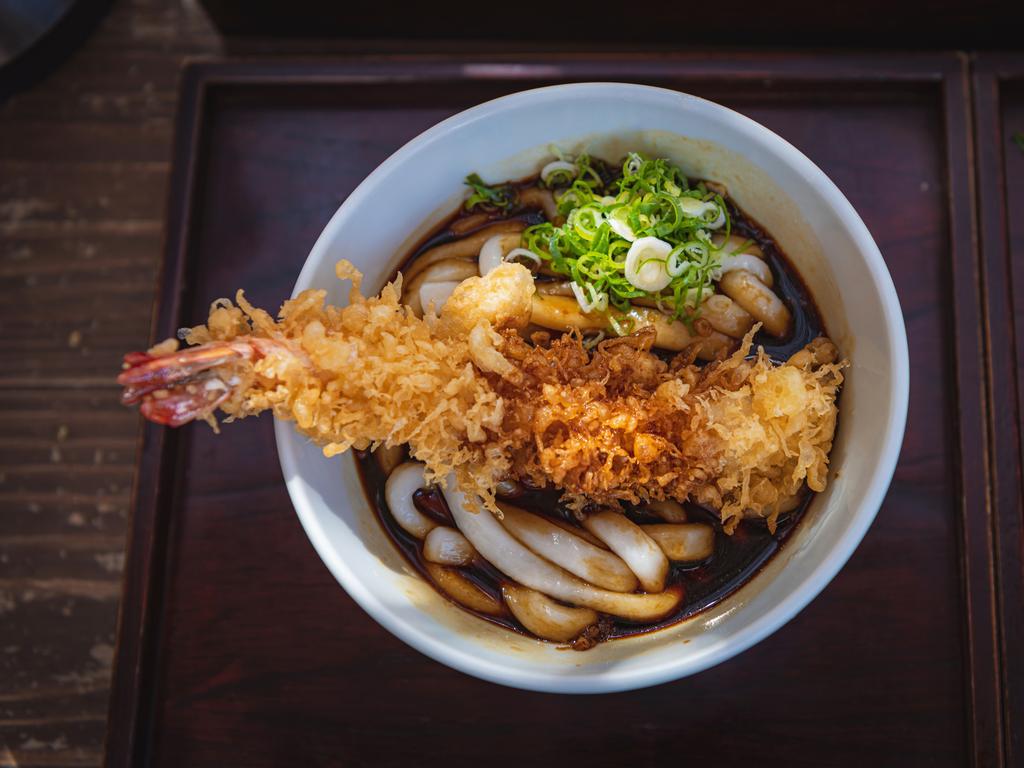

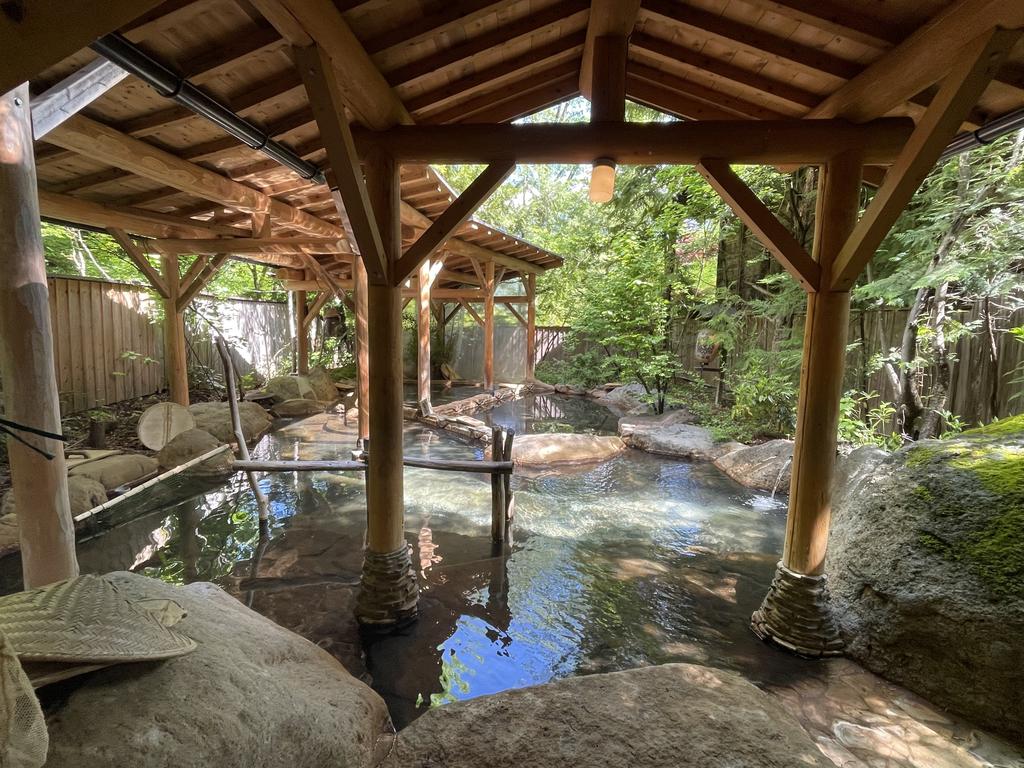
To join the conversation, please log in. Don't have an account? Register
Join the conversation, you are commenting as Logout